How to cook delicious Japanese rice! Differences from foreign rice and tips on the amount of water and how to wash rice.
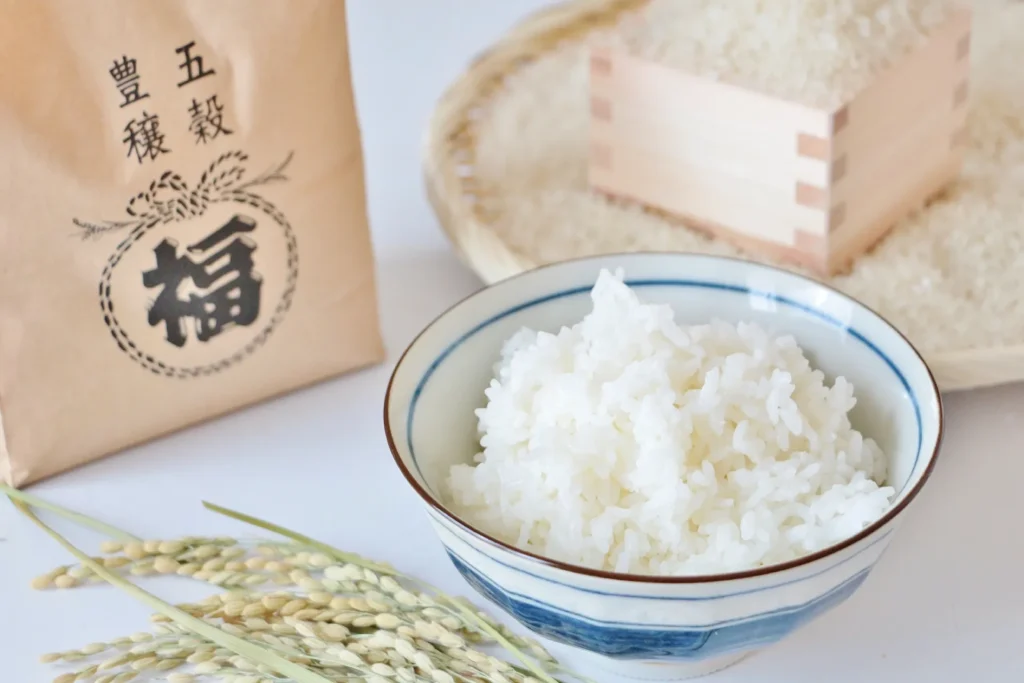
Japanese rice is an essential part of the Japanese diet, but it can fail to be too soft or too hard depending on how it is cooked. Good rice enhances the flavor of side dishes and enriches the meal.
On the other hand, in many foreign countries, a different type of rice is mainly eaten than Japanese rice. Understanding the characteristics of Japanese rice and how it differs from rice in other countries is the first step to cooking delicious rice.
In this issue, we will explain the characteristics of Japanese rice and how it differs from rice from other countries, as well as introduce tips that will enable anyone to cook delicious rice without making mistakes. We hope you will find this information useful so that you can enjoy fluffy, glossy rice on your dining table every day.
▼Goandup Picks Click here for recommended articles!
- Required before studying abroad! Goandup Nihongo+, an online Japanese language learning service
- This page introduces services for foreigners who wish to study in Japan or improve their Japanese language skills to learn Japanese online.
- Goandup Salon" community for foreigners living in Japan
- We introduce an online community where foreigners living in Japan can exchange information and interact with each other to support their life in Japan.
- Goandup Study" supports foreigners who want to study in Japan.
- This section introduces study abroad support services that provide comprehensive support to foreigners who wish to study in Japan, from preparation for study abroad to living in Japan.
- Where can I buy a prepaid SIM in Japan? Recommended SIM cards for foreigners are also introduced.
- How to purchase a prepaid SIM and suitable SIM cards for foreigners.
- The Complete Guide to Pocket Wi-Fi in Japan for Foreigners!
- We introduce how to select and recommend pocket Wi-Fi products that can be used conveniently in Japan.
- The Complete Guide to Finding a Job in Japan! Finding a job, changing jobs, and part-time work for foreigners
- This site provides foreigners who want to work in Japan with comprehensive information on how to find a job, recommended job sites, and other information necessary to find a job.
What are the characteristics of Japanese rice and how does it differ from rice from other countries?
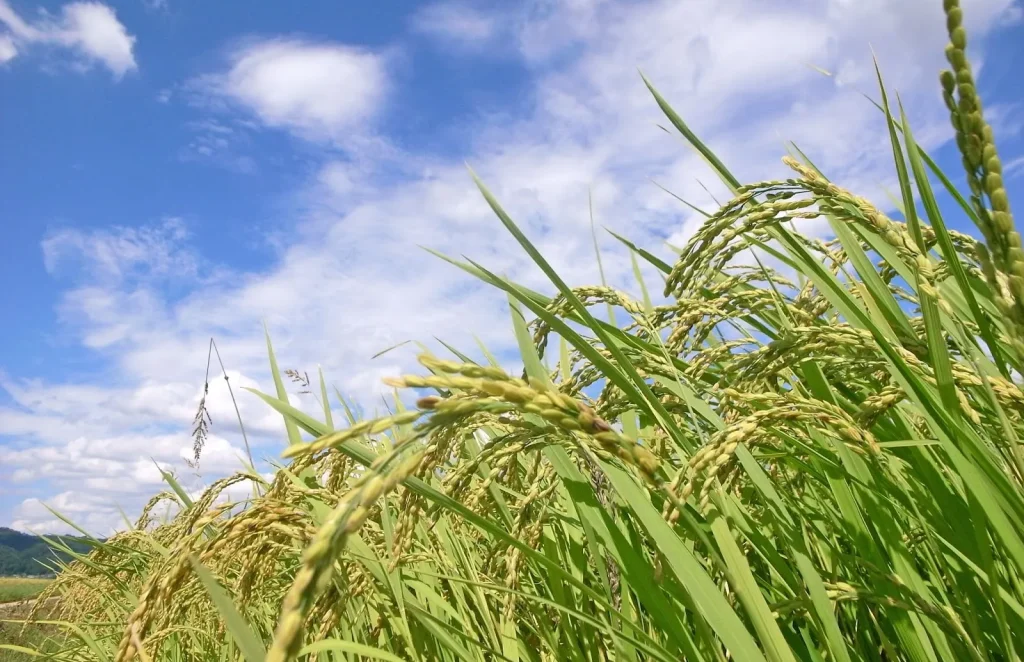
Approximately 100,000 varieties of rice are grown in the world, which can be broadly classified into three types: indica rice, japonica rice, and javanica rice.
The type of rice mainly eaten in Japan is called "japonica rice.
1. characteristics of japonica rice (Japanese rice) and reactions overseas
Japonica rice is characterized by its short, rounded shape, which makes it glossy and sticky when cooked. Japonica rice accounts for approximately 20% of rice production and is grown mainly in Asia, including Japan. In recent years, it has also been grown in the United States and Australia to meet export demand to Japan and other countries.
Although rice is most familiar to Japanese people, it is sometimes considered "too sticky" or "watery" by people from other countries. This is thought to be due to differences in food culture and tastes among different countries. However, as Japanese food grows in popularity around the world, more and more foreigners are beginning to understand and enjoy the taste of Japonica rice.
2. indica rice
Indica rice is the most major rice variety grown in large areas of the world. Indica rice accounts for more than 80% of total rice production.
Indica rice is characterized by its elongated shape and crispy texture when cooked. This characteristic makes it well suited for dishes such as pilaf, paella, and curry. Many varieties of rice, including Thai rice and Basmati rice, are classified as indica rice.
3. javanica rice
Javanica rice is a rare type of rice that is grown in limited areas in tropical Asia, particularly Indonesia, and in Central and South America.
Javanica rice is characterized by its wide, large grain shape and its sticky yet light flavor.
As described above, there is a wide variety of rice in the world, each with different characteristics. From the next section, we will focus on Japanese rice and explain in detail the tips for cooking it well.
How to measure rice and units
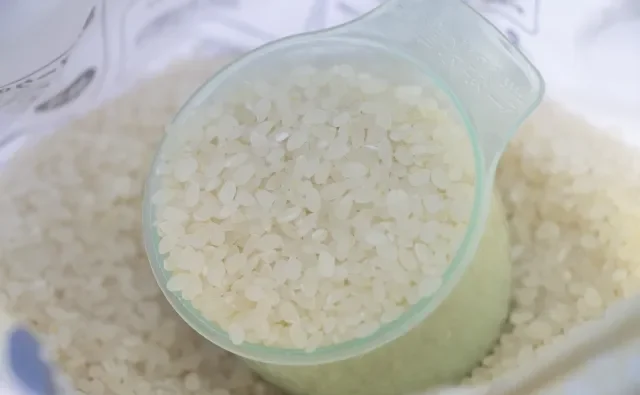
When measuring rice, international standard units require the use of "kg" or "cc". However, in Japan, while "kg" is used when purchasing rice, "Go" is commonly used when measuring rice at home.
One cup is equivalent to 180 cc, but note that the amount is slightly different from that of a standard measuring cup (200 cc). Incidentally, 1 cup of rice cooks about 2 cups of rice.
Weighing method for rice
To measure rice, it is easy to use a special measuring cup for rice. One measuring cup for rice can measure one cup of rice. It is often included with the purchase of a rice cooker, but can also be found at home centers and 100 yen stores.
Accurate weighing is important for cooking good rice. The weighing method for rice is as follows
- Scoop rice with measuring cup
(Never thump and stuff.) - Scrape off the bulging part with chopsticks or a spatula to make it level.
(This can be done with the fingers, but as there is a possibility of error, chopsticks or other tools should be used whenever possible.)
4 alternatives to measuring cups
If you do not have a measuring cup for rice, you can still use the following substitutes for measuring.
(1) Measure with a kitchen scale
One cup of rice is approximately 150 grams. Using a kitchen scale, you can accurately measure one cup of rice.
(2) Measure with a measuring spoon
One tablespoon is equivalent to 15 cc, so 12 tablespoons will measure exactly 180 cc for one cup of rice. However, if you miscount, you will not be able to cook good rice.
(3) Measure with a paper cup
Since most common paper cups have a capacity of 200 cc per cup, you can measure the volume of one cup by serving less than one cup. You can use other cups as well, as long as you know the volume of one cup.
(4) Measure by the ratio of rice to water
You can cook delicious rice in a ratio of 1 cup of rice to 1.2 cups of water, without sticking to 1 cup. For example, for 1 paper cup of rice, add 1 paper cup and about 1/5 cup of water.
This method is recommended in situations where you are not particular about "cups," such as when cooking rice in a pot or when camping.
How to wash Japanese rice for delicious cooking

Japanese rice sold in supermarkets is already polished, so there is no need to wash it until the water becomes clear. Also, if the rice is washed too vigorously, it may break, and even the umami flavor may be removed.
Therefore, when washing Japanese rice, the basic rule is to wash it gently and quickly. Rice can be washed directly in the rice cooker's inner pot, but it is recommended to use a bowl and colander to avoid possible damage to the inner pot.
Let's take a closer look at how to wash rice.
- Fill a bowl with plenty of water and place the measured rice in a colander.
- Place the colander with the rice in the bowl of water, gently turn the rice around 4-5 times, and immediately discard the water (speed is the key!).
- At this point, it is recommended to transfer the rice from the colander to a bowl
- In the absence of water, gently rice the rice in the shape of a hand lightly gripping a tennis ball.
- Fill the rice washing bowl with water and discard the muddy water.
- Repeat steps 4 and 5 2-3 times. (The water is just right when it is slightly cloudy white when filled with water.
The most important part of the rice washing process is step 2, the "washing" process. It is no exaggeration to say that the speed of the washing process determines the taste of the rice. Rice begins to absorb water from the moment it comes into contact with water, so the first water you put in contains the most rice bran and impurities. If the rice is washed slowly, the smell of rice bran and other impurities will be transferred to the rice, and the rice will not be cooked well.
Amount of water to cook good Japanese rice

The amount of water used to cook rice is an important factor in determining the hardness of the cooked rice. Failure to cook rice that is too hard or too soft is almost always caused by the amount of water.
The basic amount of water is 200 cc per cup. Depending on your preference, adjust to 220 cc to 230 cc per cup if you like it softer, or 170 cc to 180 cc per cup if you like it firmer.
When cooking rice in a rice cooker, simply add water according to the white rice memory. If you want the rice to be softer, add water a little above the memory level, and if you want the rice to be firmer, add water a little below the memory level. However, you will need to adjust the amount of water according to the type of rice.
(1) For no-wash rice
Normal rice absorbs water during the washing process, but since no-rinse rice does not need to be washed, there is no time for it to absorb water. Therefore, if you cook the rice with the same amount of water as usual, the rice will be a little hard. When you cook no-rinse rice, you should add a little more water than usual (220 cc to 230 cc per 1 cup) to make the rice tastier.
(2) For new rice
Newly harvested rice contains a lot of water. Therefore, if the rice is cooked with the usual amount of water, it will be soft and sticky. When cooking new rice, use less water than usual (170 cc to 180 cc per 1 cup) for better taste.
(3) For old rice
Old rice that has been harvested for a long time has lost its water content. Therefore, if cooked with the usual amount of water, the rice will be very hard and dry. When cooking old rice, add more water than usual (230 cc to 250 cc per cup) to find the desired firmness for a tasty rice.
If you forget how many cups of rice you put in
If you forget how many cups of rice you put in while you are washing rice, try the method of filling the water to the first joint of your index finger. If you have large hands, you can use the first joint of your little finger as a guide.
This is only a guideline, as finger length varies from person to person, but it is a useful method in times of need.
By adjusting the amount of water, you can cook rice to your desired consistency. In the next section, we will finally explain how to cook rice. We will cover both the case of using a rice cooker and the case of using a pot.
How to cook delicious Japanese rice
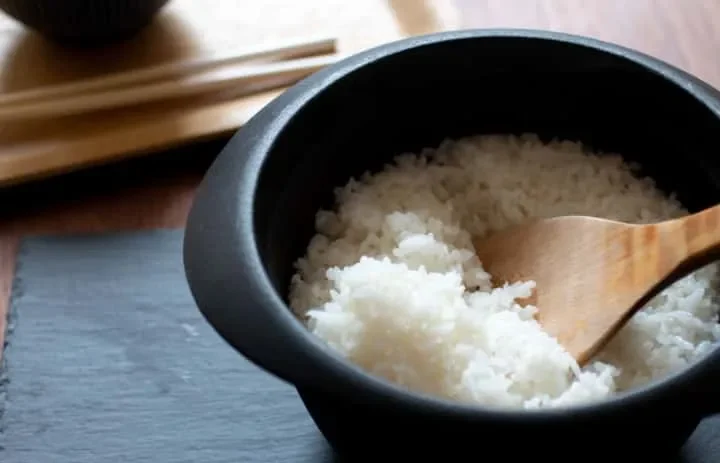
Once the rice is ready for cooking, it is time for the stage of cooking fluffy, shiny rice. The process of cooking rice basically consists of three steps: 【 soak in water 】 → 【 cook 】 → 【 steam 】.
Here we will show you how to use both a rice cooker and a pot.
How to cook delicious rice when cooking in a rice cooker
When cooking rice in a rice cooker, three processes are automatically performed: 【 soaking in water 】【 cooking 】【 steaming 】. Therefore, it is no problem to press the cook button immediately after washing rice, or to open the lid immediately after cooking大丈夫.
However, be careful not to leave the rice as it is after cooking, as this will cause the rice to dry out to a crisp after being cooked to perfection. Open the lid immediately after cooking to allow excess steam to escape and to loosen the rice.
Stand the rice scoop vertically and make a crosswise slit to divide the rice into four equal portions. Then, break the rice into pieces by switching the top and bottom from the bottom of the pot so as not to crush the rice grains as much as possible. It is also recommended to wipe off any water droplets on the lid so that they do not fall onto the rice.
Although the keep-warm function of rice cookers is convenient, it is not recommended because keeping rice warm for long periods of time can dry it out, resulting in poor taste and texture. However, some of the latest rice cookers have functions that prevent the rice from deteriorating, such as using steam to recreate the freshly cooked state of the rice. Please check the warming function of your rice cooker.
How to cook rice well in a pot
If you do not have a rice cooker, you can still cook rice using a pot at home. The method of cooking rice in a pot may seem difficult, but once you get the hang of it, you can cook delicious rice with no mistakes.
In fact, the method of cooking rice in a pot can cook rice in a shorter time than in a rice cooker. Remembering this method can be useful in times of disaster or camping, as rice can be cooked even in situations where electricity is not available.
The pot does not have to be an earthenware pot, 大丈夫. Any pot with a lid can be used. If possible, we recommend using a pot with a transparent lid.
Now let's look at how to cook rice in a pot.
- Soak washed rice in water (30 minutes in summer, at least 1 hour in winter)
- Discard soaking water.
- Put rice and water in a pot.
- Bring a saucepan to a boil over medium to high heat.
- Once the pot comes to a boil, reduce heat to low and cook for 15 minutes (until no more bubbles appear).
- When the water is gone, turn off the heat and steam for 10 minutes with the lid on.
The most important part of cooking rice in a pot is the process of soaking the rice in water. By waiting slowly and without rushing, you can cook fluffy, shiny rice in an ordinary pot.
Incidentally, you can also cook rice in a frying pan. When cooking rice in a frying pan, care must be taken not to burn the rice as it cooks quickly.
In the next section, we will provide some one-point advice on how to cook rice more deliciously. Please refer to them to cook the ultimate delicious rice.
Now that the rice is ready to cook, we are almost ready for fluffy, shiny rice!
3 Tips for Cooking Delicious Japanese Rice
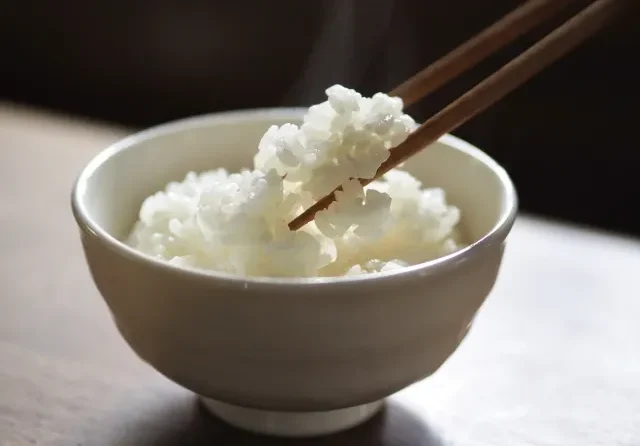
Here are three suggestions for cooking rice better.
(1) Do not cook a lot at once
Cooking a large amount of rice at one time will result in uneven cooking and may result in rice that does not cook well; for a 5-cup rice cooker, it is recommended to limit the amount of rice cooked to 4 cups at most.
(2) Use soft water when cooking rice.
Hard water, which contains high levels of minerals such as calcium and magnesium, is not suitable for cooking Japanese rice. Using hard water will result in hard rice.
Tap water in Japan is soft, so you can cook delicious rice with tap water, but if you use mineral water, be sure to choose soft water.
(3) Know the amount of water you prefer.
In order to cook the ultimate delicious rice, it is important to know what hardness you prefer. Try cooking rice with a standard amount of water first, and if you find it too soft, reduce the amount of water next time, and if you find it too hard, increase the amount of water, and so on.
The amount of water varies depending on the type and brand of rice, as well as the season, so fine-tuning each time will allow you to cook delicious rice to your liking at any time.
How to store excess rice
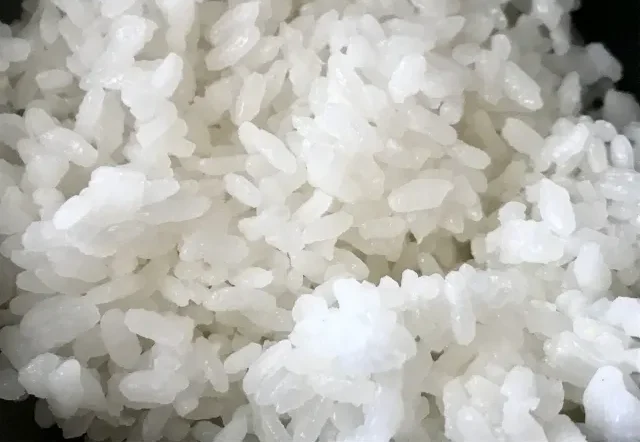
If you have leftover rice that you have cooked to perfection, we recommend that you store it instead of throwing it away. By cooling the cooked rice as soon as possible and then freezing it, the rice can be stored for a long time without changing its taste or texture.
Stocking up on frozen rice is convenient because you can simply defrost it anytime you want a delicious meal. To store, simply wrap it in plastic wrap or place it in an airtight container such as Tupperware. Remember to let the rice cool down sufficiently before putting it in the freezer.
To eat frozen rice, simply heat it up in the microwave. For a bowl of rice, heating it for 2 minutes and 30 seconds is all it takes to enjoy a bowl of tasty, warm rice.
Serious employment support to help you realize your dream of working in Japan!

Do you want to work in Japan?
Let us "Goandup" make that dream a reality!
【 Program Features 】
✅ JLPT N3 level Japanese language acquisition
✅ Thorough preparation for the specific skills test
✅ Full support for job hunting in Japan
Business-focused one-on-one lessons will help you find a job in Japan in the shortest possible time.
【 Program Menu 】
- Individual Japanese language lessons
- Intensive curriculum to obtain N3, especially specialized lessons for business Japanese that can be used at work.
- Intensive curriculum to obtain N3, especially specialized lessons for business Japanese that can be used at work.
- Preparation for the Specific Skills Test
- Customized materials for specific skill tests will be used to focus on frequently asked questions and learning to pass the test.
- Customized materials for specific skill tests will be used to focus on frequently asked questions and learning to pass the test.
- Resume and CV support
- To create resumes and CVs tailored to Japanese corporate culture, and to brush up on self-promotion and motivation for application.
- To create resumes and CVs tailored to Japanese corporate culture, and to brush up on self-promotion and motivation for application.
- Interview Preparation
- Guidance on areas for improvement through mock interviews and feedback based on corporate interview scenarios. Learn interview etiquette and behavior unique to Japan.
- Guidance on areas for improvement through mock interviews and feedback based on corporate interview scenarios. Learn interview etiquette and behavior unique to Japan.
- career consulting
- Provide introductions to companies that match the participant's career goals, select companies to apply to, and provide advice on the level of knowledge required by the companies to which the participant is applying.
- Provide introductions to companies that match the participant's career goals, select companies to apply to, and provide advice on the level of knowledge required by the companies to which the participant is applying.
- Chat Support
- In addition to one-on-one individual lessons, we also accept casual questions via DM (visa application, living support, assistance in finding a room, etc.).
If you are serious about your career in Japan, join us now!
▶︎ for more informationclick here.
We will do our best to support your success in Japan!
summary
Japanese rice is an essential staple of Japanese cuisine, and its taste can vary greatly depending on how it is cooked. In this issue, we have explained in detail the differences between Japanese rice and rice from other countries, as well as tips on how to cook it to the best taste.
To review the key points, the following is a summary.
- Japanese rice is "japonica rice" characterized by its stickiness and glossiness.
- It is important to measure rice accurately. If you do not have a dedicated measuring cup, use a substitute and get creative!
- The basic method of washing rice is gentle and quick. It is especially important to discard the first water quickly
- Amount of water must be adjusted depending on the type of rice and whether it is old or new rice.
- Whether you use a rice cooker or a pot, you can cook delicious rice once you get the hang of it.
- Do not cook too much at once, use soft water, and figure out how much water you like to use.
Learn how to cook delicious Japanese rice and put delicious rice on your dinner table every day. Freshly cooked, fluffy rice will surely enhance the deliciousness of side dishes and make your meals more enjoyable.
Your support will help us!
Thank you for visiting Goandup Picks. Our mission is to provide you with more useful information to show the world what Japan has to offer.
Your support will help us to further enhance our activities, so please support us!






